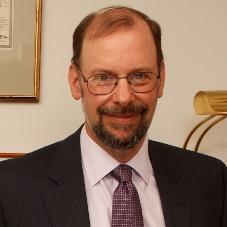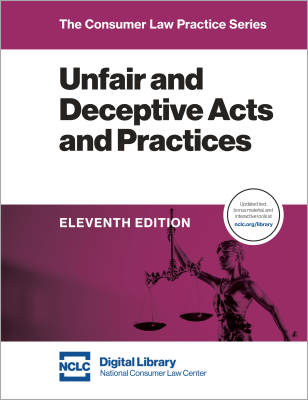In Expressions Hair Design v. Schneiderman,___S.Ct.___, 2017 WL 1155913 (Mar. 29, 2017), the Supreme Court held that a New York consumer protection statute restricted commercial free speech, requiring an analysis whether it should be struck down for that reason. Because the statute at issue in Expressions is quite unusual, the holding should be very limited precedent for a finding that other consumer regulations restrict commercial speech.
Nevertheless, Expressions may trigger corporations’ increased use of a First Amendment free speech defense to consumer litigation. This article discusses the holding in Expressions, and then examines more broadly existing Supreme Court precedents about whether consumer protection regulations improperly impinge on commercial free speech.
The Regulation at Issue in Expressions
Expressionsinvolved an unusual New York statute that prohibited merchants from adding a surcharge for credit card payments, but allowed discounts for cash payments and allowed for separate prices for cash and credit cards. In other words, a merchant could advertise a $10.30 standard price with a 30 cent cash discount. It could even advertise a $10.30 price for credit card payments and a $10.00 price for cash payments. But it could not advertise a $10.00 standard price and a thirty cent surcharge for credit card payments. The statute did not regulate whether the merchant could charge two different prices for cash and credit cards, or regulate the differential between the two prices, but only how the two prices were communicated.
As such, the Court had little problem finding that the statute regulates commercial speech. It contrasted this statute with one that regulated prices. Merchants would have to communicate to customers the regulated price, and such communications would be speech, so that a price regulation statute would indirectly dictate the content of speech. But Chief Justice Roberts in writing the Court’s opinion distinguished such price regulation:
But the law’s effect on speech would be only incidental to its primary effect on conduct, and “it has never been deemed an abridgement of freedom of speech or press to make a course of conduct illegal merely because the conduct was in part initiated, evidenced, or carried out by means of language, either spoken, written, or printed.” [citations omitted]
The Court’s holding in Expressions that the statute restricts commercial speech, and not just conduct, does not end the inquiry in that case. Instead, the holding just sets the standards to analyze whether the New York statute can be upheld. Although restrictions on commercial speech face closer scrutiny than restrictions on commercial conduct, regulations restricting commercial speech often survive that scrutiny.
Since the Second Circuit’s decision had found the statute not to involve commercial speech, it had upheld the statute based on the rational basis test for commercial conduct. The Supreme Court remanded the case with instructions for the Second Circuit to analyze the statute under the stricter standard for commercial speech.
Other Supreme Court Precedent on Commercial Free Speech
Since it first extended First Amendment protection to commercial speech in Virginia State Board of Pharmacy v. Virginia Citizens Consumer Council, 425 U.S. 478 (1976) and other cases, the Supreme Court has repeatedly held that commercial speech is entitled to less protection against regulation than non-commercial speech. See NCLC’s Unfair and Deceptive Acts and Practices § 11.9.2.1.
Restrictions on commercial speech, even if content-based, are subject not to the strict scrutiny ordinarily applied to restrictions on fully protected speech, but to a lesser intermediate scrutiny that lies somewhere between the standards for commercial conduct and fully protected speech. See Cent. Hudson Gas & Elec. Corp. v. Pub. Serv. Comm’n, 447 U.S. 557, 564 (1980). Under this test, even truthful commercial speech can be regulated if the government asserts a substantial interest in support of the regulation, the regulation directly and materially advances that interest, and there is a reasonable fit between the government’s ends and the means chosen to accomplish those ends. See e.g. Sorrell v. IMS Health Inc., 564 U.S. 552 (2011). For more details, see Unfair and Deceptive Acts and Practices § 11.9.2.2.
The substantial nature of the government interest need not be shown by extensive empirical data, but can be justified by studies and anecdotes relating to different locales, or even by history, consensus, and common sense. And the state need not choose the least restrictive means to accomplish its ends. All that is required is a reasonable fit between the legislature’s ends and the means chosen to accomplish those ends. Commercial speech is viewed as hardier than other speech and thus the balancing test tips more toward the state’s interests. For a fuller discussion, see Id. § 11.9.2.2.
If a challenged regulation simply requires a commercial speaker to disclose factual and uncontroversial information, courts’ standard of review is even more lenient, akin to the rational-basis test applicable to regulation of commercial conduct. See Zauderer v. Office of Disciplinary Counsel, 471 U.S. 626, 651 (1985).
Moreover, false, deceptive or misleading or unlawful commercial speech is not protected at all. Nor is speech that is partly true and partly false. Prophylactic orders or rules whose objective is the prevention of deception before it occurs are not unreasonable or overbroad, even if they prohibit actions that are not clearly deceptive. For more on this, see id. § 11.9.2.1. For a discussion of whether certain commercial speech is really political speech and thus protected even if false, see Id. § 11.9.2.3.
In summary, to the extent that a consumer protection regulation either regulates conduct with only an incidental effect on speech, that prohibits or prevents deception, or that requires truthful disclosures, the regulation will withstand constitutional challenge as long as it has a rational basis. In the rare consumer protection statute that does regulate truthful commercial speech (such as one that allows communication of a discount, but not of a surcharge), that statute need only withstand an intermediate level of scrutiny.
Some of the petitioners’ amici in Expressions called on the Court to overturn all of this Supreme Court precedent, and impose the same strict scrutiny standard for commercial speech as applies to other forms of speech. The Court did not do so.
Whether the statute at issue in Expressions can be upheld under the intermediate scrutiny test, or as a disclosure law, will be up to the Second Circuit. No matter how the Second Circuit rules, however, the unusual nature of the statute at issue there, and the Supreme Court’s refusal to overturn its longstanding commercial speech precedents, mean that advocates should continue to be able to defeat First Amendment challenges to most consumer protection statutes.


